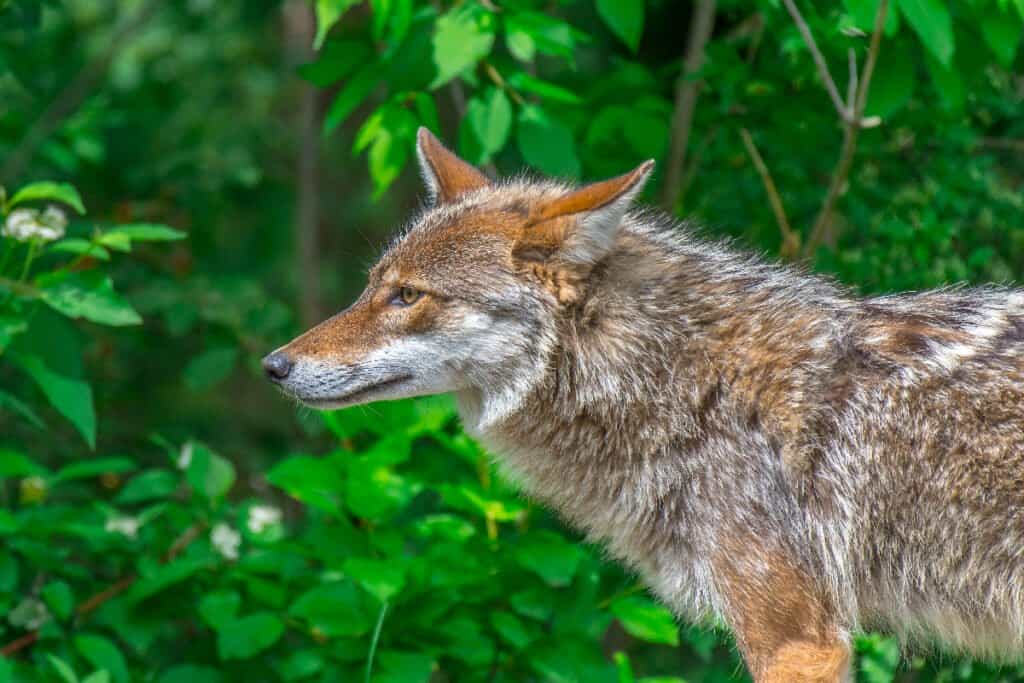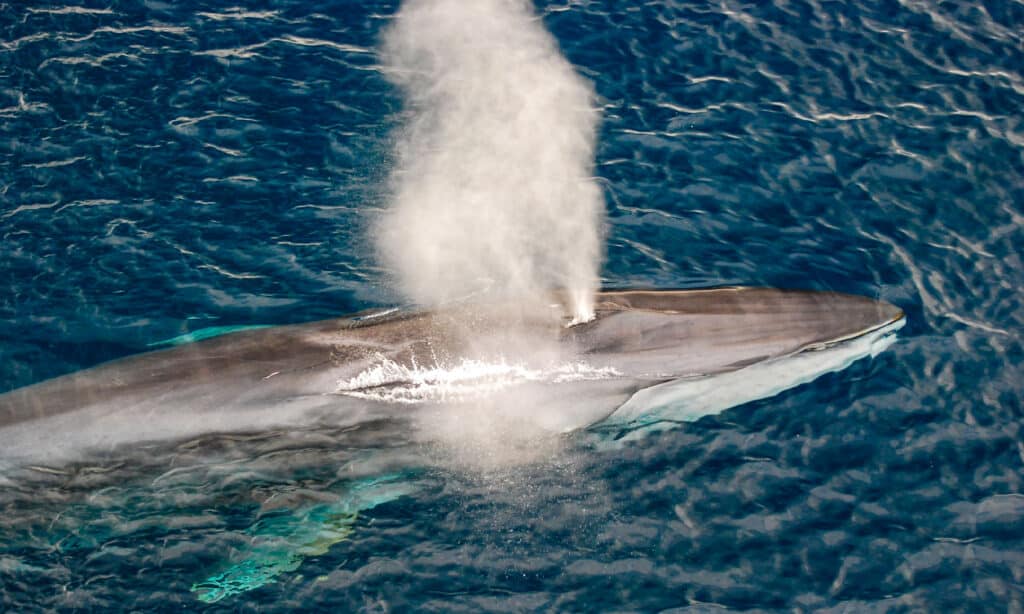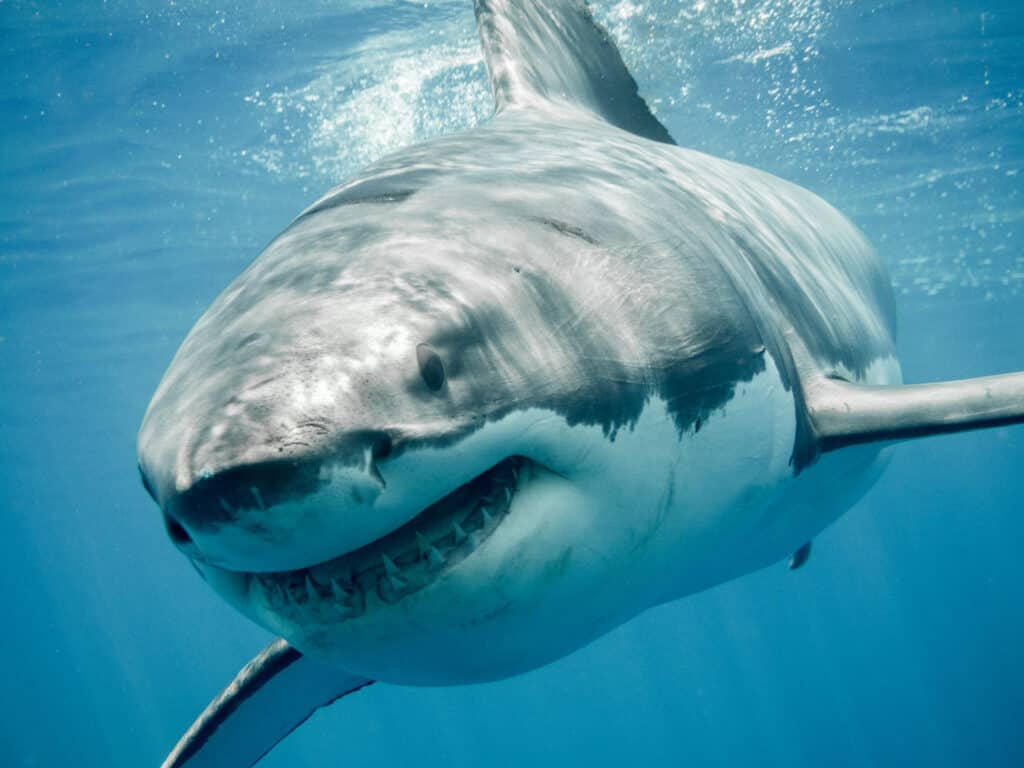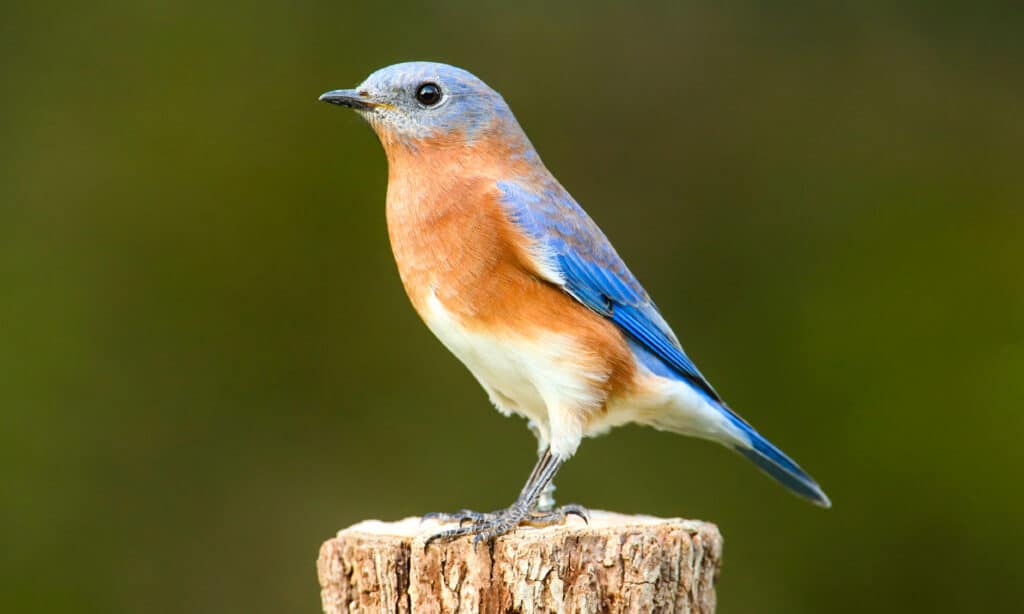New York is one of the most famous US states in the world, known for 24/7 entertainment and fast city life. It also has many stunning natural areas, home to diverse wildlife. 61% of the state is covered in forests, and its other ecosystems include grasslands, shrublands, salt marshes, coastal planes, and dunes. Thousands of plant and animal species thrive within its borders, including some that can outrun Olympic sprinters! Discover the fastest animals in New York and find out what makes them so swift.
1. Golden Eagle – 200 mph

You can see golden eagles in New York during migration.
©Vladimir Kogan Michael/Shutterstock.com
The golden eagle is one of North America’s largest and most agile raptors. They live in open mountains, foothills, and plains and are an infrequent sight in New York. Currently, no golden eagle pairs reside in the state, but they can be seen during migration. The best area to see a golden eagle in New York is Upstate near the Catskills. You can identify these raptors by their golden feathers and the V-shape they create with their wings.
Their typical soaring speed hovers around 30 miles per hour, but they can exceed 120 mph when hunting and up to 200 mph diving for prey. As impressive as these speeds are, golden eagles fall just shy of the peregrine falcon’s 240 mph diving speeds. These birds of prey have a seven-foot wingspan and aerodynamic body shapes that allow them to reach these incredible rates.
2. Coywolf – Up to 43 mph

Coywolves have fast legs and powerful muscles.
©Mark Byer/Shutterstock.com
A coywolf is a hybrid canine produced from a wolf and coyote, and it can be found throughout most of New York State, with larger populations in Upstate and semi-rural areas. Residents of New York City have even spotted them roaming the streets and stalking pedestrians.
While potentially dangerous, coywolves are fascinating creatures who quickly adapt and tolerate crowds, loud noises, and changing environments. They are also more robust and adaptable than their descendants, with faster legs and more powerful muscles. Wolves can run 37 miles per hour, and coyotes can reach 43 mph, but the speed of a coywolf has never been measured. However, they have faster legs than coyotes, so it’s reasonable to assume they could run just as fast, if not faster, than both wolves and coyotes.
3. Ladybug – 37 mph

The ladybug can fly for quite long distances.
©L-N/Shutterstock.com
Ladybugs are small beetles common throughout North America, and there are at least 13 species in New York. You can spot these dainty bugs in mixed forests, fields, meadows, gardens, parks, and suburban backyards. We often see ladybugs crawling across a window sill or perched on a leaf, but this tiny creature can stay in the air for two hours at a time and reach impressive speeds.
A ladybug can fly up to 37 miles per hour! To compare, the fastest human can only sprint up to 28 mph. With a good tailwind, it can cover a distance of 70 miles before coming to a stop. Their wings are four times larger than their bodies and can flap 85 times per second due to an abundance of elasticity. They rely on their speedy, mechanic-like wings to easily lift off surfaces and fly through the air.
4. Fin Whale – 29 mph

The fin whale can grow over 60 feet long.
©iStock.com/JG1153
Fin whales are the second largest whale species on earth and reside throughout the world’s oceans. The fin whale can grow over 60 feet long and weigh up to 100,000 pounds. But despite its gigantic size, it can reach incredible speeds. Their average cruising rate is around 20 miles per hour, but they can sprint up to 29 mph for short periods. Its caudal peduncle supports its tail fin, the engine to its torpedo-shaped body. The peduncle creates thrust and acceleration as the whale waves its tail up and down.
5. Great White Shark – 25 mph

Great white sharks can swim up to 25 mph in short bursts.
©Ramon Carretero/Shutterstock.com
The great white shark is one of the most feared creatures in the sea, and you can find them in the coastal waters of all major oceans. New York has over 500 miles of coastline, which contains two dozen shark species, including the infamous great white. Check out Long Island’s south shore to find a nursery of juvenile great white sharks (or don’t)!
These toothy sea animals are powerful swimmers, able to travel long distances and leap ten feet out of the water. They can swim up to 25 miles per hour, and you will typically see them right below the water’s surface. These sharks have torpedo-shaped bodies and muscular tails that propel them through the water as they search for their next meal.
6. Eastern Bluebird – 17 mph

The speed of the eastern bluebird helps it escape predators.
©Steve Byland/Shutterstock.com
The eastern bluebird is a small thrust native to open woodlands and orchards in North America. This species is the state bird of New York and is highly favored as it is one of the first birds to return north during spring. These migratory birds are strong fliers, traveling up to 2,000 miles and reaching speeds of 17 miles per hour, about the speed of a professional human sprinter. While they use their quick flying skills for migration, they also come in handy for escaping predators like domestic cats and squirrels.
Up Next:
- Discover the Fastest Animals in Indiana
- Discover the Fastest Animals in Connecticut
- Discover the Fastest Animals in New Jersey
The photo featured at the top of this post is © Al Carrera/Shutterstock.com
Thank you for reading! Have some feedback for us? Contact the AZ Animals editorial team.






